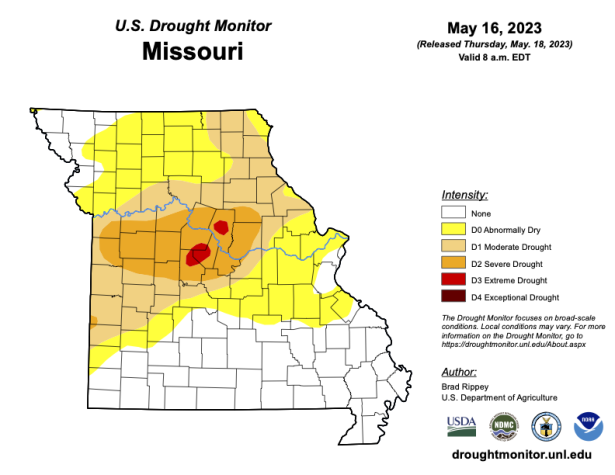COLUMBIA, Mo. – Missouri farmers who check rain gauges daily can help other farmers across the nation by reporting precipitation totals.
Tony Lupo, University of Missouri professor of atmospheric science and interim MU Extension climatologist, encourages farmers to be citizen scientists by reporting daily precipitation totals to the Community Collaborative Rain, Hail and Snow network, or CoCoRaHS (pronounced KO-ko-rozz).
Through this volunteer network, backyard weather observers measure rain, hail and snow in communities in all 50 states, Canada and the Bahamas. Climatologists then compile and map the information at CoCoRaHS. The CoCoRaHAS website gives precipitation maps in real time, in addition to historical information.
To report, go to Become a CoCoRaHS Observer. Lupo says participation is easy and free. Participants need a rain gauge and receive free, brief online training.
Lupo also recommends the Missouri Climate Center, which links to the National Drought Monitor. It gives current conditions and an outlook. The National Drought Monitor analyzes Condition Monitoring Observer Reports from citizens and others to map the severity of drought by nation, state and county.
See National Drought Mitigation Center for these reports.
The Farm Service Agency uses these reports to help determine federal drought and flood declarations. These declarations govern what counties qualify for assistance for affected row crops, livestock, forages and specialty crops.
Lupo says the Missouri Climate Center’s direct link to the National Drought Monitor has proved invaluable in recent drought years. Missourians submitted 539 reports between July 1, 2022, and Feb. 28, 2023.
Other resources to help the agricultural community:
• Midwestern Regional Climate Center (MRCC) serves the nine-state Midwest region of Missouri, Illinois, Indiana, Iowa, Kentucky, Michigan, Minnesota, Ohio, and Wisconsin. MRCC’s easy-to-read, customizable charts include growing season statistics, frost/freeze probabilities and information on growing degree days. Go to Midwestern Regional Climate Center.
• Vegetation Impact Program (VIP) monitors and assesses real-time information from MRCC on the same website. MU collaborates with other universities and agencies across the U.S. on this site. Data from VIP helps producers with frost and freeze guidance, stress degree days and the Keetch-Byram Drought Index.
• Horizon Point, offered by MU Extension, gives rainfall runoff estimators, weed and scouting aids, fall nitrogen application charts and planting-depth soil temperature, among the many offerings. Users can subscribe to receive email advisories.
• Missouri Mesonet presents information from real-time weather stations in more than 40 sites across the state. The Mesonet website gives a weather summary of precipitation, wind speed and soil temperature by station.
•Missouri Climate Center, through the MU College of Agriculture, Food and Natural Resources, offers numerous weather and climate-related articles and resources specifically for Missouri.
Lupo says there are many other free online climate global and local resources, including these:
• National Climatic Data Center
Graphic:
National Drought Monitor screenshot
Farmers can make valuable contributions to weather reporting services by checking rain gauges and reporting the results. Reports to the Missouri Climate Center’s direct link to the National Drought Monitor have proved invaluable in recent drought years.
